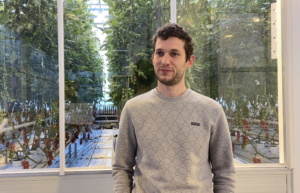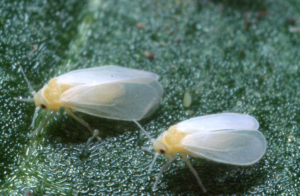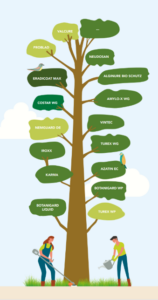December 6, 2023
by Aron Boerefijn, Technical Account Manager Greenhouse Horticulture, Certis Belchim.

Gaining practical experience with new agents is crucial
Currently, the agriculture and horticulture sectors are facing significant challenges in the field of crop protection. The Future Vision for Crop Protection 2030 focuses on the cultivation of resilient plants and cropping systems. Due to the disappearance of certain active ingredients, the available package of crop protection products is becoming less comprehensive for the effective control of diseases and pests in various crops. Therefore, it is increasingly important to manage crop protection advisedly. Understanding the use of active ingredients and gaining practical experience with new biological products is crucial. Crop protection has become much more knowledge-intensive than it already was.
The effective application of registered and approved green crop protection products (biorationals) has been gaining significant attention in recent years. Crop protection is becoming more of a complex systemic approach aimed at keeping disease and pest pressure low from the beginning of cultivation. Biorationals fit well into this systemic approach because they can be combined with natural predators.

More knowledge required
In the past, growers could rely on a single application of broad-spectrum chemical insecticides to eliminate 95% of the insects present. These products had an immediate effect and were also absorbed by the crop, providing residual action on the pests. However, that certainty no longer exists as such products have almost entirely disappeared from the market. Biorationals often have a short immediate effect through contact and no residual action. Their effective application often requires more knowledge and experience than chemical products. Biorationals typically distinguish themselves from conventional products by their very specific modes of action. In addition to good knowledge of diseases and pests, a solid understanding of product function, spray techniques, and the right application conditions are needed to achieve satisfactory results.

BotaniGard
An example of a widely used biorational is the insecticide BotaniGard. The active ingredient in BotaniGard is a fungus. Knowledge of the product and how it works is essential for effective use. There are two formulations of the product that can be used in various crops to combat insects such as thrips, whiteflies, and root borers. BotaniGard Liquid is only recommended and used in chrysanthemum cultivation. Botanigard WP (powder formulation) is recommended in other crops due to crop safety.
Contact agent
Like most biorationals, BotaniGard is a true contact agent: the pest insects must be in contact with the product for effective control and the fungus must germinate on the insect within 24 to 48 hours. Therefore, application technique is crucial, and treatment will need to be repeated to achieve sufficient control. A significant advantage of this product is that it can be used almost year-round with the possibility of a short spray interval. In floriculture, the agent can be used up to 73 times a year, which allows for constant pressure on thrips and whiteflies. This is particularly effective when combined with Azatin, a conventional insecticide, and the use of natural predators.
Application technique
BotaniGard WP can also be applied effectively through space treatment, using Low Volume Mist (LVM), in addition to spray application. Recent research by Certis Belchim comparing application methods found that the results of space treatment for whiteflies in lisianthus are at least as good as normal spray application. This application method requires less labour and allows for a shorter interval: the label allows application of BotaniGard every five days, which makes it possible to ensure that insect pressure remains low from the beginning of cultivation.
Collaboration is essential
Crop protection has become much more knowledge-intensive than it used to be. The entire cycle from crop rotation to crop rotation must be accurate, pests must be identified in a timely manner, spray techniques must be correct, and agents must be compatible with other products or natural predators. This demands more knowledge: knowledge of the pest, biorationals, biological control agents, damage thresholds, and the complete picture associated with an integrated approach.
To support distributors and growers, and as part of Certis Belchim’s commitment to develop and deliver sustainable and innovative crop protection solutions, work has been ongoing at the Certis Belchim Innovation Center in Naaldwijk for several years on practical research and the development of biorationals.